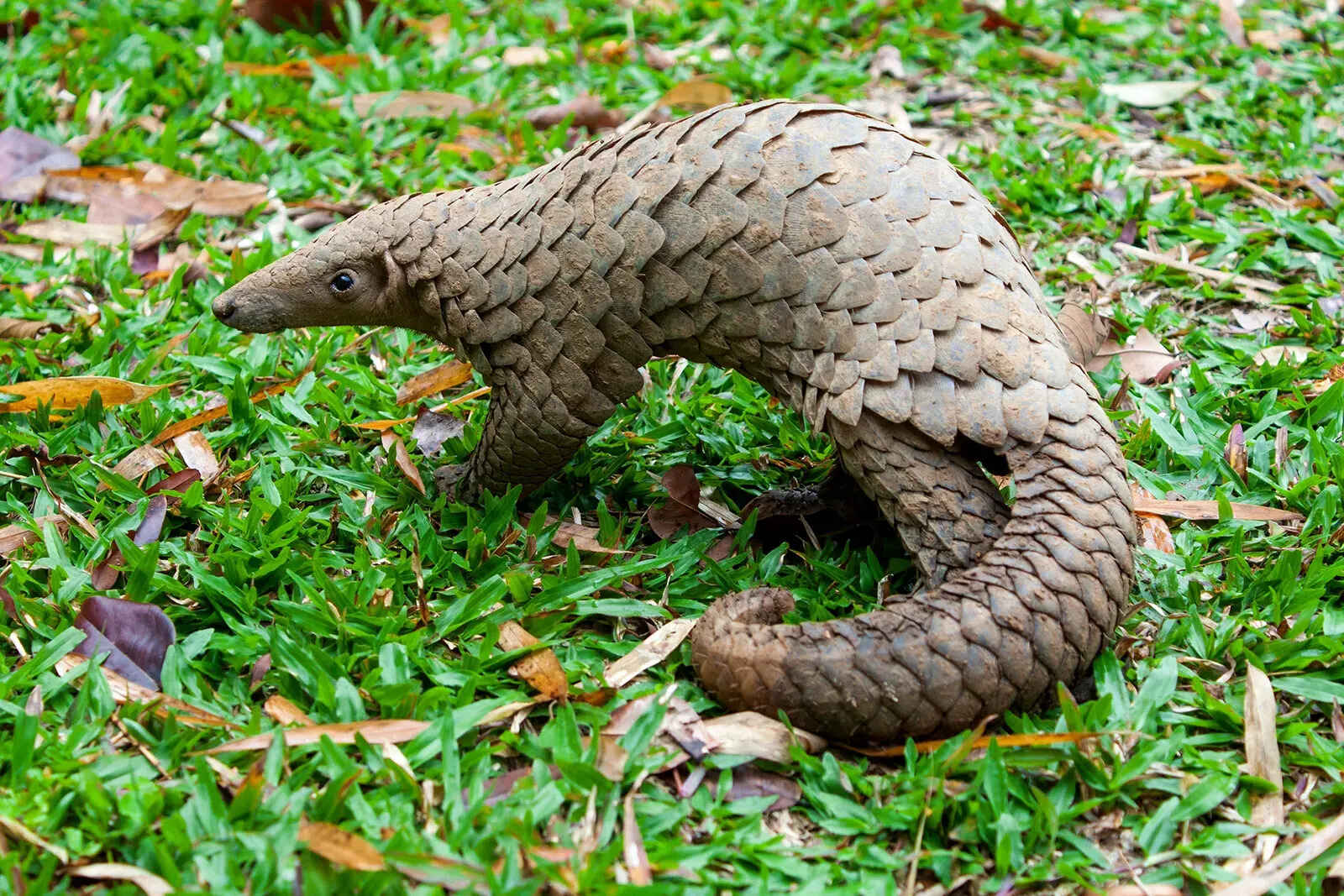
Ever wondered about the mysterious giant pangolin? These fascinating creatures, covered in tough, overlapping scales, are the largest of all pangolin species. Found mainly in the forests and savannas of central Africa, giant pangolins are nocturnal and elusive, making them hard to spot. They can grow up to 4.5 feet long and weigh as much as 70 pounds! Their diet consists mainly of ants and termites, which they capture using their long, sticky tongues. Sadly, giant pangolins face threats from habitat loss and illegal hunting for their scales and meat. Want to know more about these incredible animals? Keep reading to uncover 31 amazing facts about giant pangolins!
Fascinating World of Giant Pangolins
Giant pangolins are mysterious creatures that roam the forests and savannas of Africa. These scaly mammals are often misunderstood and underappreciated. Let's dive into some intriguing facts about these unique animals.
-
Largest of Their Kind
Giant pangolins are the largest species of pangolin, reaching up to 4.5 feet in length and weighing as much as 72 pounds. -
Armor-Plated
Their bodies are covered in tough, overlapping scales made of keratin, the same material found in human nails and hair. -
Nocturnal Habits
These creatures are primarily nocturnal, meaning they are most active during the night. -
Solitary Animals
Giant pangolins prefer to live alone, only coming together during mating season. -
Insectivores
Their diet consists mainly of ants and termites, which they extract using their long, sticky tongues. -
Tongue Length
Their tongues can extend up to 16 inches, allowing them to reach insects deep within nests. -
Powerful Claws
They have strong, curved claws used for digging into termite mounds and ant hills. -
Excellent Diggers
Giant pangolins can dig extensive burrows where they sleep and hide from predators. -
Sensitive Nose
Their sense of smell is highly developed, helping them locate insect nests. -
Poor Vision
Despite their keen sense of smell, their eyesight is quite poor.
Unique Adaptations
Giant pangolins have evolved several unique adaptations that help them survive in their environment. These adaptations make them fascinating subjects for study.
-
Scale Defense
When threatened, they curl into a tight ball, using their scales as armor against predators. -
No Teeth
They lack teeth and rely on their strong stomach muscles and ingested stones to grind up food. -
Sticky Saliva
Their saliva is extremely sticky, aiding in the capture of insects. -
Slow Metabolism
They have a slow metabolic rate, which helps them conserve energy. -
Low Reproductive Rate
Females give birth to only one offspring at a time, making population recovery slow. -
Long Gestation Period
The gestation period lasts about 140 days, after which a single baby is born. -
Maternal Care
Mothers are very protective, carrying their young on their tails for the first few months. -
Lifespan
In the wild, giant pangolins can live up to 20 years. -
Silent Movers
They move quietly through their habitat, making them difficult to detect. -
Unique Walk
They walk on their hind legs, using their tail for balance, which gives them a distinctive gait.
Conservation Challenges
Giant pangolins face numerous threats that endanger their survival. Understanding these challenges is crucial for their conservation.
-
Poaching
They are heavily poached for their scales, which are used in traditional medicine. -
Habitat Loss
Deforestation and land conversion for agriculture are destroying their natural habitats. -
Illegal Trade
They are one of the most trafficked mammals in the world, with their parts sold on the black market. -
Climate Change
Changes in climate patterns affect the availability of their insect prey. -
Human Conflict
Encroachment by humans often leads to conflicts, resulting in the killing of these animals. -
Lack of Awareness
Many people are unaware of their existence and the threats they face, leading to a lack of conservation efforts. -
Slow Reproduction
Their low reproductive rate makes it difficult for populations to recover from declines. -
Disease
They are susceptible to diseases, which can spread rapidly in small populations. -
Predation
Natural predators include large cats and hyenas, which can prey on young or injured individuals. -
Conservation Efforts
Various organizations are working to protect giant pangolins through anti-poaching measures and habitat preservation. -
Research Importance
Studying giant pangolins can provide valuable insights into their biology and ecology, aiding in their conservation.
The Final Word on Giant Pangolins
Giant pangolins are truly fascinating creatures. From their unique scales to their nocturnal habits, these animals have a lot to offer. They play a crucial role in their ecosystems by controlling insect populations. Unfortunately, they face significant threats from poaching and habitat loss. Conservation efforts are essential to ensure their survival.
Understanding these gentle giants helps us appreciate the diversity of life on Earth. By spreading awareness and supporting conservation initiatives, we can make a difference. Giant pangolins remind us of the importance of protecting all species, no matter how obscure they might seem.
Next time you think about wildlife, remember the giant pangolin. Their survival depends on our actions. Let's work together to ensure these incredible animals continue to thrive for generations to come.
Was this page helpful?
Our commitment to delivering trustworthy and engaging content is at the heart of what we do. Each fact on our site is contributed by real users like you, bringing a wealth of diverse insights and information. To ensure the highest standards of accuracy and reliability, our dedicated editors meticulously review each submission. This process guarantees that the facts we share are not only fascinating but also credible. Trust in our commitment to quality and authenticity as you explore and learn with us.
